In stark contrast to yesterday, today it was just a bee hive of activity in the trees and bushes all along the trail…
but before we get to that we’ll take a quick look at the log bay area where all the water related activity was taking place. Lots of Salmon, in fact the numbers of salmon had increased all along the area. Not as many Bald Eagles, perhaps 50 or 60, most out on the edges of the gravel bars……lots of ducks..
Here are some of the American Wigeon that were in the log bay..
Many, many gulls, especially way out. This guy was in the log bay area and I think is a California Gull….this based on the fact that there was a mix of black and red on that marking on it’s bill. I am not an expert at identifying gulls so I may be wrong.
and speaking of identifying….those 3 Swans were still out there (only 2 in picture) and still way out, but I did get enough of a look at their heads to clarify their ID as Tundra and not Trumpeter Swans. Again, I am no expert, but I will try to give a brief synopsis of the difference:
Tundra Swans are slightly smaller and their backs are less evenly rounded than a Trumpeters, but the biggest difference, is the bill shape and coloration
This is a cropped version of a very poor photo I took of a Tundra Swan family that was here several years ago. The bill is very slightly concave on top and you will note that the bird on the left has yellow at the base of the bill ~ this is a very helpful and positive ID marker…unfortunately, they don’t all have it. The only other Swan species with yellow on the bill is the very rare (for our area) Whooper Swan and it’s bill is almost entirely yellow. Juvenile Tundra Swans are actually easier to identify as their bills are pink at the base where as a juvenile Trumpeter Swan’s bill is always black at the base.
Now I’m going to really confuse the issue….this picture taken on Vancouver Island shows an adult Trumpeter Swan standing in the rear….notice how straight his bill is…very ‘roman nosed’. The bird in front is a young Mute Swan…as a Mute Swan ages his bill becomes bright orange.
Now back to today….the bushes were full of Song Sparrows, Spotted Towhee’s,
Lots of Robins and a few Varied Thrush but most noticeable was a large flock of Chestnut-backed Chickadees!
The above picture wasn’t taken today, but was taken in the area. We all know the Black capped Chickadee and it’s call of ‘chick a dee dee’ ~ The Chestnut-backed is slightly smaller, with a ‘chestnut coloured back and sides and has a more nasal sounding call….more like ‘tsicity zee zee’. They are found mainly on the extreme west coast of the province and for the past few years have been scare in this area. The flock I saw today had a good number of birds in it so perhaps that will change this winter.
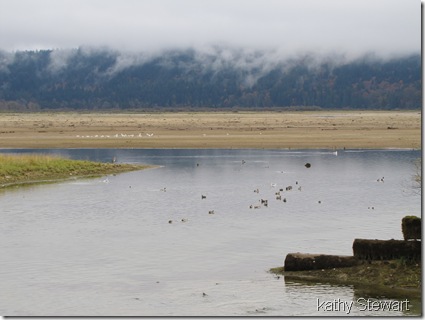

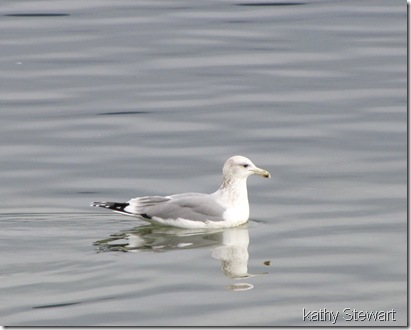

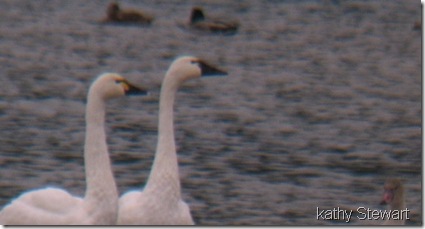
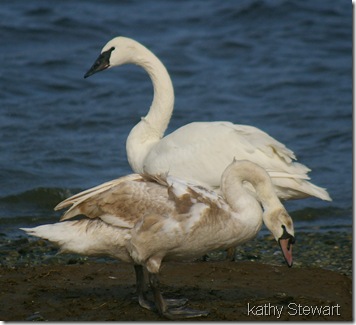
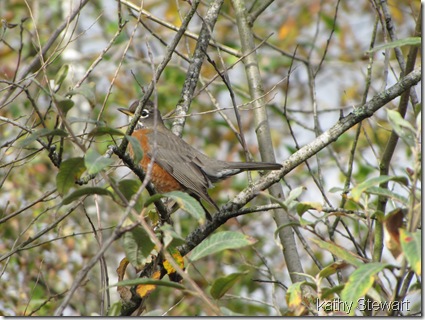
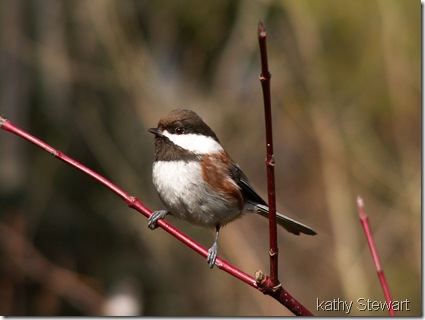
No comments:
Post a Comment